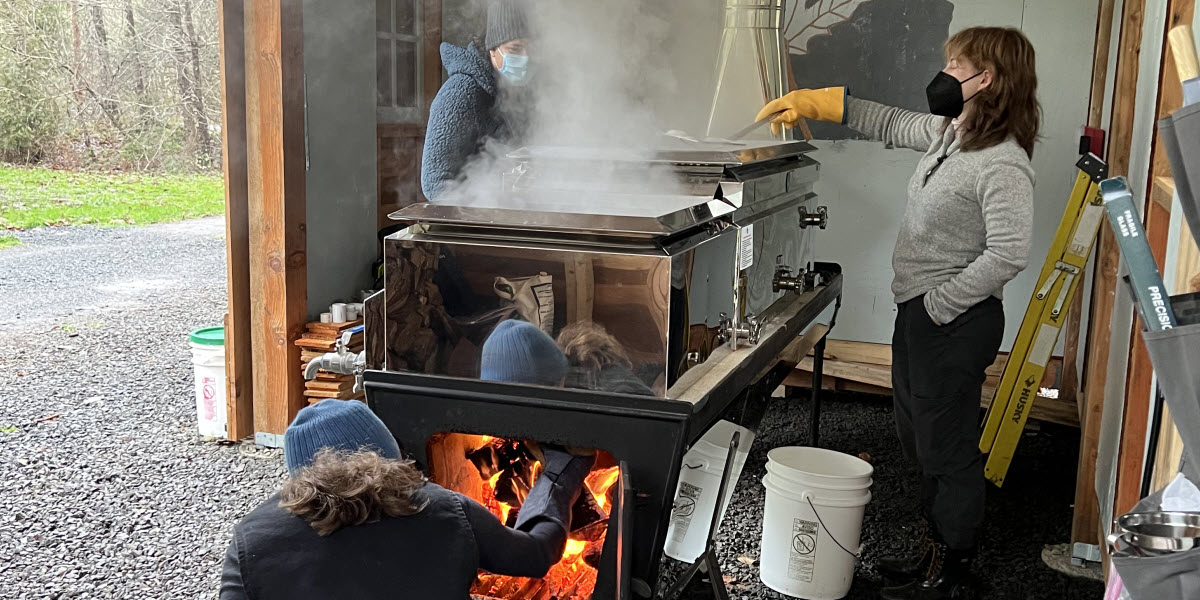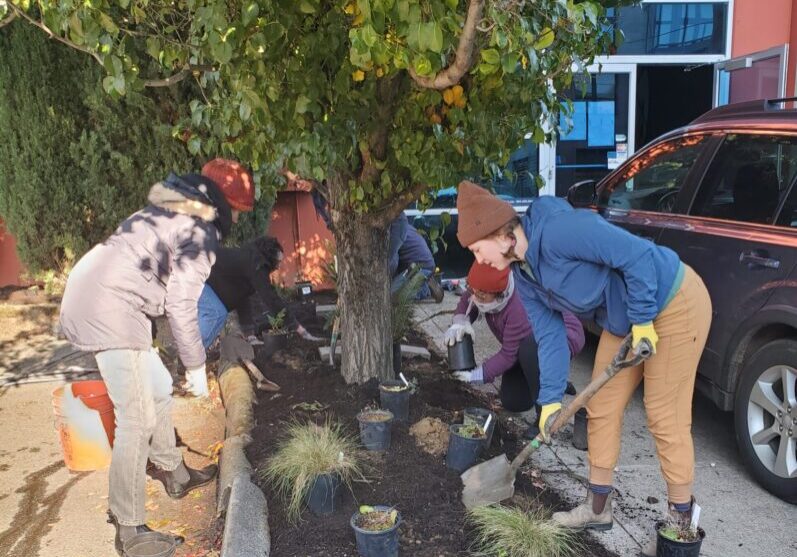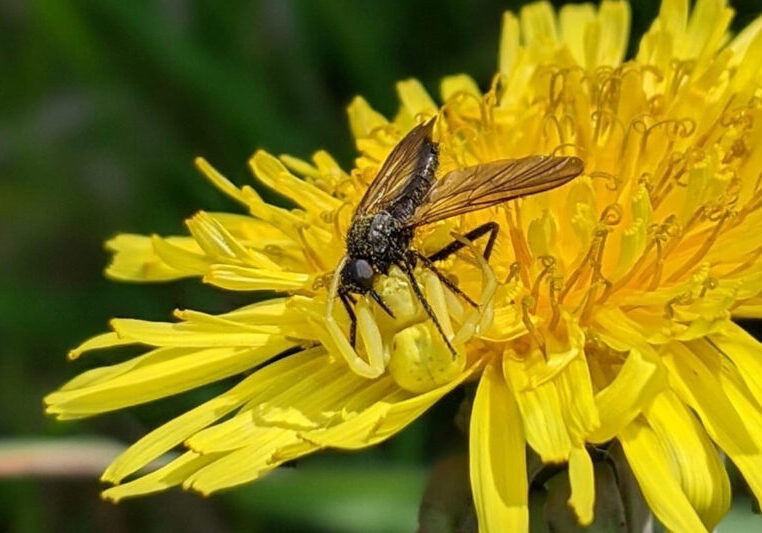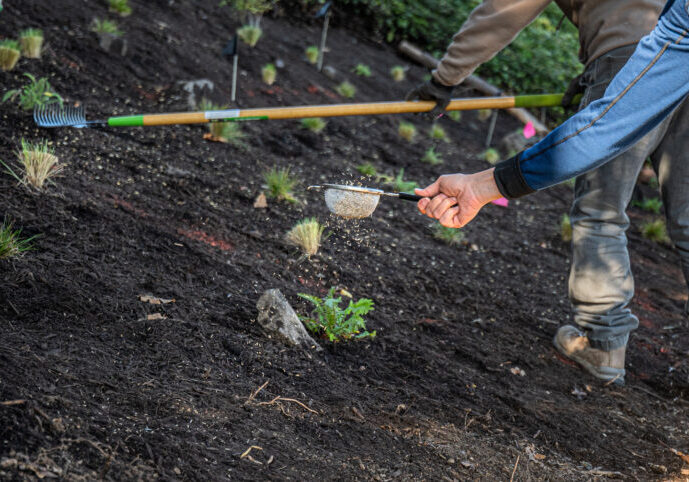Guest article by Eric T. Jones, Oregon State University
One thing western Oregon has an abundance of is bigleaf maple (Acer macrophyllum) trees. Ask a Douglas fir tree farmer and they will likely tell you that as hard as they try, they are difficult trees to kill. Enter the Oregon State University (OSU) College of Forestry project to understand and promote commercial opportunities for bigleaf maple sap-based food products like syrup. Just like their sugar maple cousins in the northeast, bigleaf maples produce sugary sap that can be collected and made into syrup and other products. So rather than try to control bigleaf maple, the OSU project is studying how bigleaf can be managed for optimal sap collection and processing alongside other farm and forest products.
Bigleaf maple sap makes a delicious syrup and shares some maple flavor characteristics with syrup made from sugar maple, but it also has a distinct flavor that most taste testers tell us they love. To participate in a taste test, keep an eye out for bigleaf maple festivals being planned for Oregon and Washington in the next couple of years. You can also reach out to some of the commercial producers beginning to offer bigleaf maple syrup. You can find several listed on the Oregon Tree Tappers website, the public website for the OSU bigleaf maple project, where you will find lots of helpful information on getting started in tapping bigleaf maple.
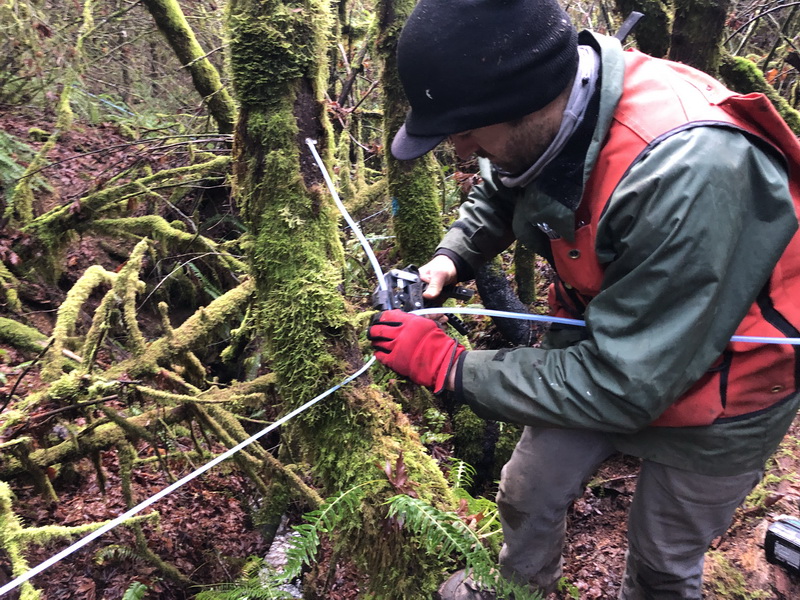
The tapping season is in winter, roughly the beginning of Dec. to the end of Feb. It takes temperatures below freezing at night and above freezing during the day for the sap to flow. It isn’t hard to teach yourself and get a few gallons to play with in your own kitchen, but you can also sign up for training events at the Oregon Maple Project, a nonprofit that has formed to promote sugaring in the area.
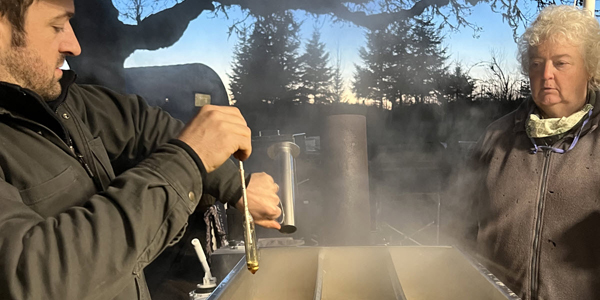
The bigleaf maple industry is just starting to take off thanks to the U.S. Department of Agriculture Acer Access and Development Program which has awarded large grants to OSU, University of Washington, and Washington State University to lay the foundation for an industry. One of the reasons bigleaf maple sap is more commercially viable than it was in the past is because of advancements in technology such as vacuum tubing and reverse osmosis. Bigleaf has roughly half the sugar content of sugar maple. So instead of needing around 40 gallons of sap to make a gallon of syrup, as is the case with sugar maple, you need 80 to 90 gallons of bigleaf sap. However, with vacuum tubing systems you can collect quantities of sap efficiently and with reverse osmosis you can remove a large portion of the water before evaporating, saving greatly on fuel costs by not having to boil off so much water to make syrup.
Currently most supplies for tapping and processing have to be bought from companies based in the northeast around the sugar maple industry. As the bigleaf industry grows we hope to see suppliers set up shop in our region and more equipment like wood-fired evaporators fabricated locally.
The OSU program will continue to research best practices around bigleaf maple sap procurement and processing, but is looking forward to holding more public events to demonstrate equipment and talk about commercial opportunities with bigleaf maple foods.
